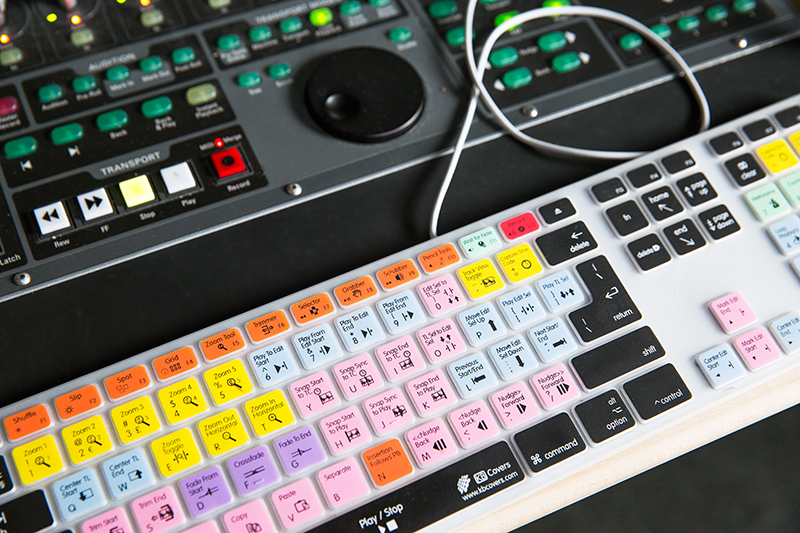
Big Audio Dynamite
By Audrey Michelle Mast (BA ’00)
Photography by Julia Stotz (BFA ’08) and Maia Harms (BFA ’09)
Imagine your favorite television or movie scene—then hit mute. No dialogue, no music, no sound effects for gunfights or slamming doors. Although perfect sound is integral to any screened production, the creatives behind the magic rarely take the spotlight. Listen up as four sound experts discuss the imagination, innovation and invention required to get the job done.
Meet The Experts
Columbia Grads Bring the Noise to TV and Film
1. ERIC JUSTEN (BA ’98) is an Emmy-nominated re-recording mixer for TV and film, which involves combining all the sound elements of a production—dialogue, music, sound effects and more—into the final audio mix. He was nominated for several Emmys and Cinema Audio Society awards, and won a prestigious Motion Picture Sound Editors Golden Reel Award for his work on AMC’s dark, gripping series Breaking Bad. He has mixed dozens of features and hit TV shows, including Elementary, The Good Wife and Numb3rs.
2. CHRISTOPHER HARVENGT (BA ’85) is a 30-year veteran of the film and TV business who works today as a supervising sound editor—overseeing every aspect of sound on a project. His TV credits include Beverly Hills 90210, Pushing Daisies and Mistresses. He was nominated for two awards from Motion Picture Sound Editors for the Fox series Terra Nova and was awarded an Emmy for sound editing for the 2014 miniseries Cosmos: A Spacetime Odyssey (hosted by astrophysicist Neil deGrasse Tyson).
3. JOHN KILGOUR (BA ’92) is an Emmy-nominated freelance sound and picture editor based in New York City. Working extensively on documentaries and nonfiction television for the past 14 years, he also is responsible for adding narration, music and sound effects to each production. A 20-year veteran of the business, he recently worked on several popular miniseries including the Emmy-winning The Men Who Built America and Emmy-nominated The World Wars for the History Channel and Gold Fever for Discovery.
4. KEN NOWAK (BA ’00) has provided sound services for a variety of films, including Steven Spielberg’s Indiana Jones and the Kingdom of the Crystal Skull and Mel Gibson’s Apocalypto, and TV shows, including the Sopranos, The Mindy Project and Family Guy. Today, he is a dub stage and transfer recordist for NBCUniversal. Duties include dubbing movies or TV in foreign languages (“like an order for season one of Quantum Leap in Portuguese,” he says), and digging deep into the studio vault to archive its vast catalogue. He’s currently digitizing the ’60s TV western Laramie.
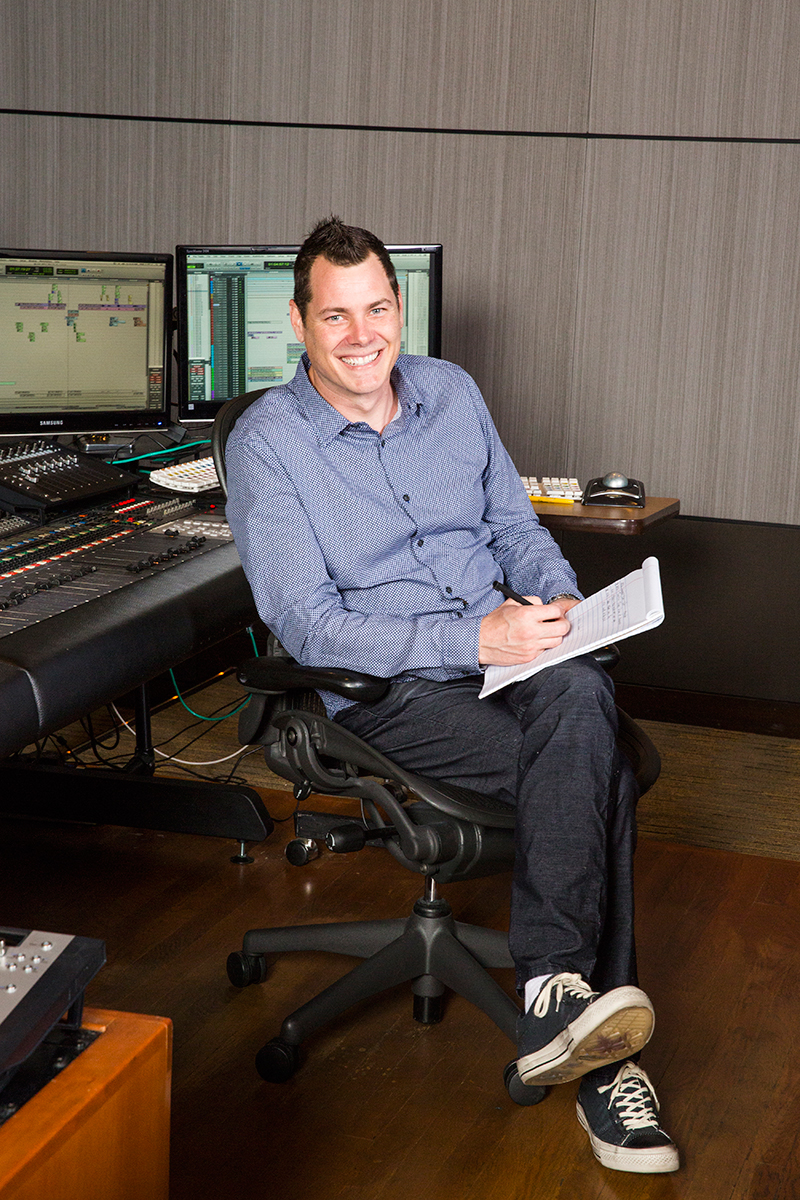
You can hear Eric Justen’s work on gritty AMC drama Breaking Bad, CBS show The Good Wife, Sherlock Holmes adaptation Elementary and crime drama Numb3rs. “Sound needs to be felt,” says Justen. “That’s the fun part … the mixing desk becomes my instrument. The faders become my fingertips.”
“If you really do love it, the money doesn’t matter—you just stick with it. I ended up working in construction for eight months during the writers’ strike.”
WHAT’S A TYPICAL DAY LIKE FOR YOU?
JUSTEN: In the feature world, it’s different all the time. You might be [mixing] by yourself; other times, you might be working with a director. On a TV show, because you usually get two days [to mix an entire episode], almost anything can happen. On the first day, Jeffrey [Perkins, mixing partner] and I try to get through the episode, then the second day, we play it for the producers, take notes and do the fixes. Then you ship it off for an airdate that can be two days later.
HARVENGT: I’m all over the place. I’m on an ADR [automatic dialogue replacement] stage part of the day, a mix stage part of the day. Days can be very long—10 hours, minimum—and a lot of times, it’s 12- to 14-hour days. It’s far cheaper to pay people in sound to crank through post-production [than for] a show to not make its target date. There are legal ramifications.
HOW HAS TECHNOLOGY CHANGED THE WAY YOU WORK ON A DAY-TO-DAY BASIS?
HARVENGT: It’s given me more opportunities, but the price point of a project has dropped overall. I started out in film—literally cutting on [analog editing devices]. If you wanted to cut dialogue, you had to be really precise, otherwise there would be a huge cost. Now you can listen to thousands of [digital] effects before you make any editing decision. But an inexperienced person may get caught up in [so many choices]. You need to get it right and move on. If you don’t make a decision, it costs money.
NOWAK: More technology has made more work. We’ll make a TV mix, and there’s a mix for the theater; we also do an iTunes mix. You have to make sure everybody can hear everything.
WHAT ARE THE BIGGEST CHALLENGES IN YOUR WORK?
NOWAK: You have to be really patient, especially when you’re restoring old things. Also, there are clients who don’t understand audio. We’re kind of the redheaded stepchild of the film industry.
HARVENGT: Getting really good production sound. That’s crucial. [Sometimes] there’s wind machines crushing the dialogue. When actors come in [to record new dialogue via the automatic dialogue replacement process], they feel as if their performance is being stripped away. I guarantee them that I will get as much of that production [value] back in as possible. If I can build trust, it’s better for everybody.
KILGOUR: Time. It’s the nature of the industry itself. People are expecting things a lot faster. Overall, everybody’s getting everything faster— information, texts. Every time we finish a cut, I wish I had two more days [to perfect it]…but it’s the nature of the beast.
JUSTEN: Schedule—trying to keep our schedule under control, especially when you have three shows running at the same time.
WHAT ARE SOME EXAMPLES OF CREATIVE EXPRESSION IN YOUR WORK?
NOWAK: Fixing problems when material has deteriorated. There might be a hole in an old show, and we might have to come up with music or sound effects to fill it in—to make it seem like it was always like that.
KILGOUR: In The World Wars, there were a lot of battle scenes. They’re very difficult. Each gun, each tank, has to have a different sound. You have to layer them; if you just find a rifle sound, it’s not very good. There have to be other sounds “below” it. In our effects library, I found an old musket sound that wasn’t of that time, but I layered it underneath the rifle shot along with a sound effect that was just a “boom”—we did this many times over with each gunshot. We had 24 tracks of sound effects for these big, epic scenes.
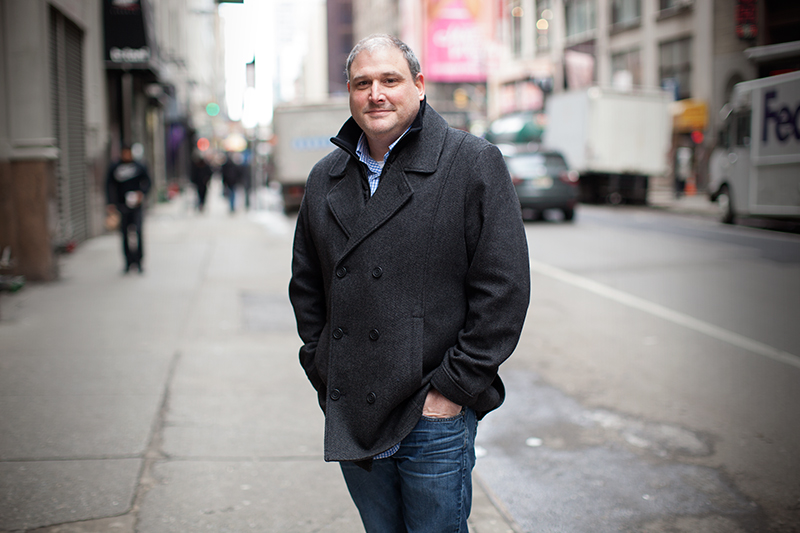
John Kilgour’s work skews toward the historical, with involvement on the miniseries The Men Who Built America, the documentary The World Wars, the miniseries Barbarians and true-crime show Redrum.
“I consider myself lucky because I’m always working. If you want to stay busy, you want to be versatile.”
HOW DID COLUMBIA PREPARE YOU FOR YOUR CAREER?
JUSTEN: Honestly, I owe most things to [adjunct professor and 33-year Columbia veteran] Diego Trejo. My very first year, I took Sound for Film with him. Diego allowed me to mix some graduate thesis films for an hour. After mixing five films, he helped get the school to allow me to mix the graduate thesis films at the end of each semester as part of my TA job. Columbia gave me so many opportunities.
KILGOUR: I’m so glad I went to film school. Getting an education in filmmaking really helps in the editing process. I still remember my Tech 1 instructor, Dennis Frank. I went to Columbia thinking I was going to be the next Steven Spielberg. I wanted to be a director. Within the first week I had a Bolex in my hands, and Dennis was telling us to go out there and shoot. I soon realized that I wasn’t a good director—I always liked editing, though. I was editing as a kid. I would take my friend’s VCR and hook it up to mine and do really crude cutting. I started to gravitate toward the edit room; I loved being in a dark room late at night. Columbia gave me all the tools and taught me how to synch, how to cut.
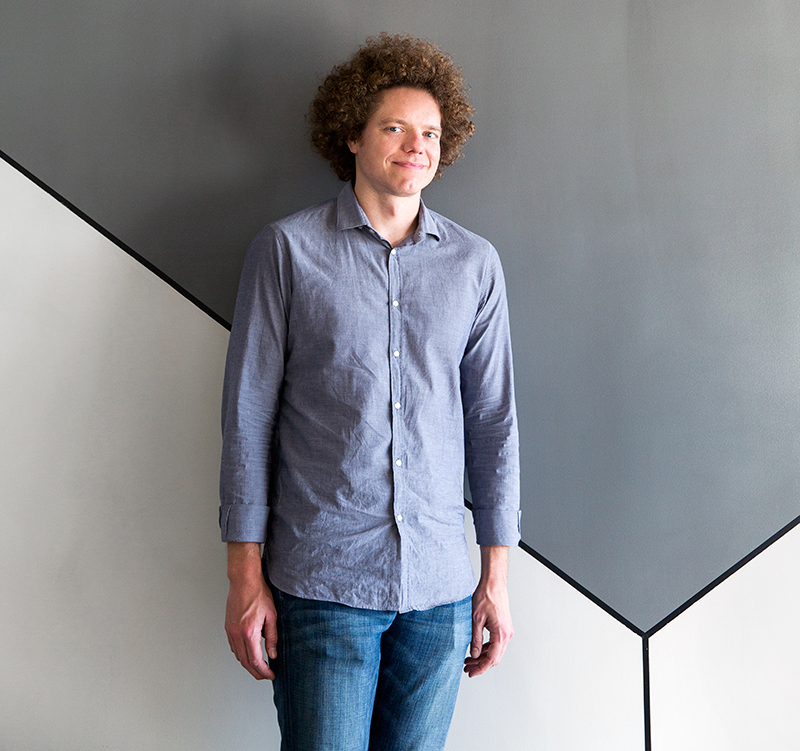
Ken Nowak’s diverse work includes Steven Spielberg’s Indiana Jones and the Kingdom of the Crystal Skull, Mel Gibson’s Apocalypto, beloved HBO show The Sopranos and even animated comedy Family Guy. Now a dub stage and transfer recordist at NBCUniversal, Nowak says, “It’s really detailed work. Our days are pretty regimented, but it’s rarely the same thing over and over again.”
“We don’t get a lot of credits in movies, and nobody knows we’re here … but we get to work—every day.”
WHAT PROJECTS ARE YOU MOST PROUD OF?
JUSTEN: Breaking Bad. There’s [relatively little to] no music on that show. Without music as an element in the storytelling, I had so many opportunities to make an environment. Also, the feature film Act of Valor. Variety doesn’t usually put re-recording mixers into the main article, and three of us found ourselves in the last paragraph of the article. We were told that doesn’t happen often. To me, that was a huge accomplishment.
KILGOUR: The Men Who Built America. It was a great show—groundbreaking. It was a grueling process, one of the hardest edits I’ve ever done. We were literally struck by Hurricane Sandy when we were finishing it. The airdates were approaching, and we had to do a bit of scrambling because our online facility was literally underwater.
But once it came out, I sat in my living room with a glass of wine, my wife and my two kids. My son, who was 10 at the time, was so into it; he was getting a history lesson, but it was told in such a cinematic way, he was enthralled. To watch them watching these shows, it was one of the most rewarding things for me personally.
WHAT IS YOUR ADVICE FOR ASPIRING TV AND FILM PROFESSIONALS?
JUSTEN: If you really do love it, the money doesn’t matter—you just stick with it. I ended up working in construction for eight months during the writers’ strike.
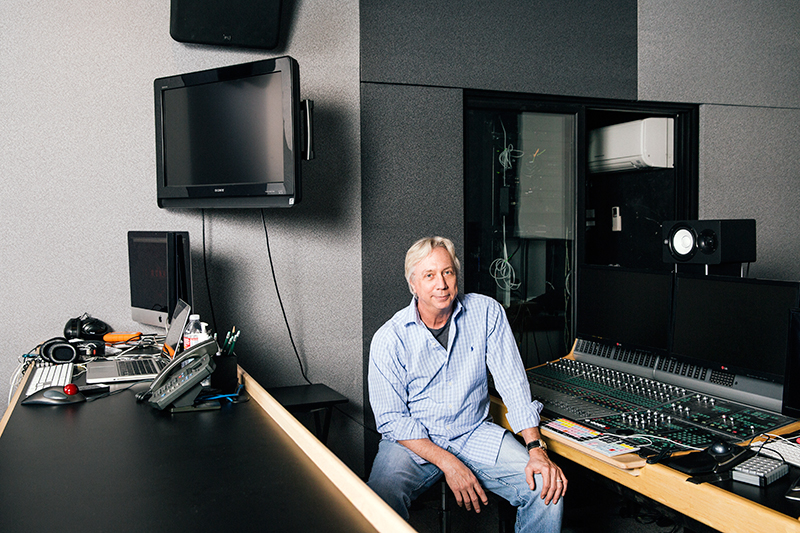
Throughout his career, Christopher Harvengt has worked on Syfy show 12 Monkeys (based on the 1995 movie), ’90s teen show Beverly Hills, 90210, quirky series Pushing Daisies, and docuseries Cosmos: A Spacetime Odyssey (hosted by astrophysicist Neil deGrasse Tyson).
“You’ve got to have so much dedication to this field. You’re giving up a lot to be in this world.”
KILGOUR: Get a camera and shoot as much as you can. Get a group of people together to make something. Constantly be making something. You’re going to find that it’s a really small world. You’ll build up a community of people that you’ll run into for the rest of your life. I consider myself lucky because I’m always working. If you want to stay busy, you want to be versatile.
HARVENGT: You’ve got to learn things for yourself. If you absorb what [directors and producers] are saying, and expand upon them, you’ll go far. You’ve got to have so much dedication to this field. You’re giving up a lot to be in this world.
NOWAK: Learn networking. Learn to present yourself. Keep in contact, so it’s not like, “We haven’t talked in four years—now give me a job.” It’s about the follow-up. I got my job [at NBCUniversal] because of someone I met back in 2000. It’s about maybe 60 percent talent and 40 percent who you are. I’ve seen really talented people wash out because they’re not social, or they’re awkward, and nobody wants to work with them—whereas some people with lesser talent are really good at working a room and making people feel good. The client wants to feel good when they’re spending $10,000 a day to make a movie.
WAS THIS ONE OF THE KEYS TO YOUR SUCCESS?
NOWAK: I think so. I also have very unique hair, so people remember me. I’ve gotten phone calls from people who are like, “You’re the guy with the hair, right?”
WHAT’S NEXT FOR YOU?
HARVENGT: I’m working on 12 Monkeys [Syfy TV series based on the 1995 movie]. It’s very creative, and it allows me to take everything that I’ve learned and put it into action. I have a great team of people I’m working with, and we knock out a great product every week. It’s a tough thing to do.
KILGOUR: I’m working on a project called American Genius on the National Geographic channel. [The series] pits one genius versus another genius, [for example] “Hearst vs. Pulitzer.” The one I’m most looking forward to is “Jobs vs. Gates.”
NOWAK: Pilot season is coming up. I really want to edit sound for a TV pilot. The hours would be crazier, but it’s a little more creative.
JUSTEN: I’m working on Pretty Little Liars…I don’t know if it’s ever going to go away [laughs]. It’s so popular. Most TV shows get picked up for a year, but this one got picked up for two. There’s always room for other stuff, though. You never know what you’re going to get next.
Sounding Off
Our Panel Dishes on Some of Their Coolest Jobs
The first credit on Christopher Harvengt’s IMDb page is the original Gone in 60 Seconds movie. Although he wasn’t part of the 1974 production, he worked on re-editing and remixing the 2000 DVD release. “We went out to Willow Springs Raceway [in Rosamond, Calif.] and recorded the original police cars of the ’70s,” Harvengt says. In the early ’90s, he was the supervising sound editor on several seasons of Beverly Hills 90210 and remembers it fondly. “I hung out at the Peach Pit and the beach club too,” he says with a laugh. “That was a perk—I was always allowed to go down to the set.”
John Kilgour prides himself on versatility. “I’m very flexible,” he says. “Last summer, I cut a true crime series. Over holiday break, I cut an infomercial.” Kilgour has also edited promos for TV, including Project Runway All Stars and Ghost Hunters. “I’m open to cutting anything, except adult films,” he says, laughing. “Being able to change up your edits keeps your job exciting. If you can wear all those hats, you’ll always be in demand.”
Eric Justen did recording work on The Fast and the Furious (2001): “That show was crazy—how long it was, the hours we worked…we got to meet Vin Diesel.” Another early project was working as part of the sound team for hip-hop artist Sisqo’s epic seven-minute music video “Unleash the Dragon” (2000). “It was a lot of fun,” Justen says, remembering how the production’s sound designer used a recording of a buzzing beehive as the effect for a Godzilla monster’s quivering tonsils.
Ken Nowak saves old and deteriorated film and video at NBCUniversal. “Sometimes you’ll open a can and the mag [film stock] has melted into a pile of goo. It reeks of vinegar when you open them,” he says. He’s occasionally a bit of a mad scientist when it comes to saving deteriorating film. “Remember that show Charles in Charge? The tape would go over the tape heads and you’d see it turning brown as it went by. To solve that, you put it in an oven and you bake it…at 125 degrees for an hour, and that usually makes it all better,” he says. “We have an oven just for that. I almost put pizza in it when I first started.”